Most people know the difference between American and Swiss cheese, but sometimes even the most ravenous carnivore doesn’t know the difference between a New York strip and a ribeye steak.
How do you know which cut to choose at the grocery store? Can these steaks be used interchangeably in recipes? Navigating various steak cuts at the butcher shop can sometimes seem overwhelming.
In this article, we are going to discuss the similarities and differences between New York strip and ribeye steaks. If you want to show off your chops when ordering at a steakhouse, keep reading.

What is a New York Strip?
The strip steak has many different names: strip loin steak, top loin steak, shell steak, club steak, ambassador steak, hotel cut steak, Kansas City strip, Omaha strip, or the New York Strip. It is most commonly known as the New York strip, since the steakhouses of New York City are where it all began.
Considered to be one of the higher-end cuts of beef, the NY strip steak is known for its beefy flavor.
In the United Kingdom, the New York strip is called a porterhouse steak. In America, a porterhouse is a different type of meat, also called a T-bone steak. This cut consists of the New York strip and part of the tenderloin, connected by a t-shaped bone.
The New York strip is carried by many butchers and is found on most restaurant menus.
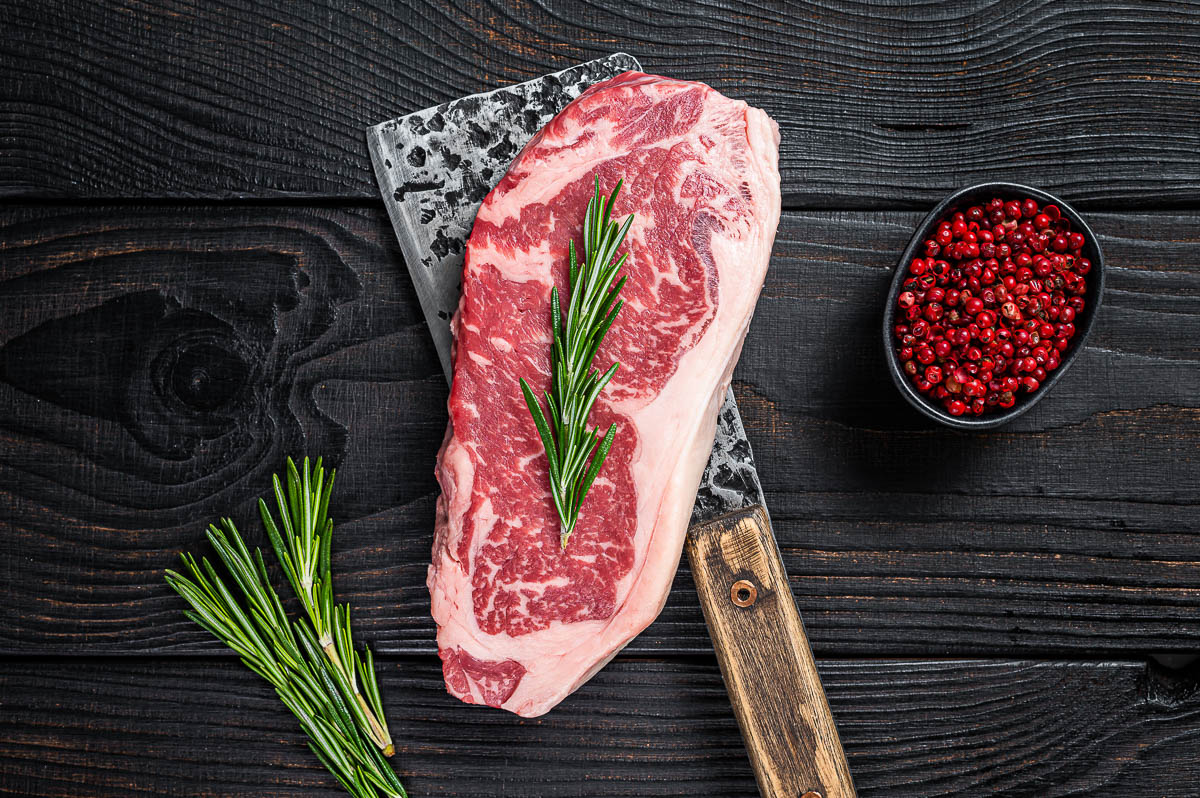
The Cut
The New York strip comes from a part of the loin primal of the cow, which is the area from which many premier cuts of steak are cut. The well-known filet mignon, the most tender cut of steak, is also cut from the loin primal. This section of the cow is located along its back, behind the ribs.
Cut from the beef short loin specifically, this cut is surrounded by other common cuts of beef, including the sirloin and the flank steak.
The location of this cut is what makes the New York strip so popular. In both the New York strip and the ribeye, the main muscle in the meat, the longissimus dorsi muscle, runs from the hip bone of the cow to its shoulder blade. They do not have much connective tissue or fat that would normally be found between muscles since they are cut from a single muscle.
This part of the short loin is not exercised as much by the cow, preventing the development of strong muscles found in the flank and shanks. This gives this cut of steak its tenderness.
The New York strip is usually boneless but can have the bone attached.
With the bone attached, this cut is called a club steak or shell steak. The bone-in option helps keep the steak moist because the bone insulates the meat while it cooks. It does require more care when cooking, due to the fact that the area closest to the bone cooks slower than the rest of the meat.
Visually, the New York strip is cut long and thin with a tight grain texture. It has a thick strip of fat running along one long side. It is usually cut thicker than the ribeye because of its lower fat content.
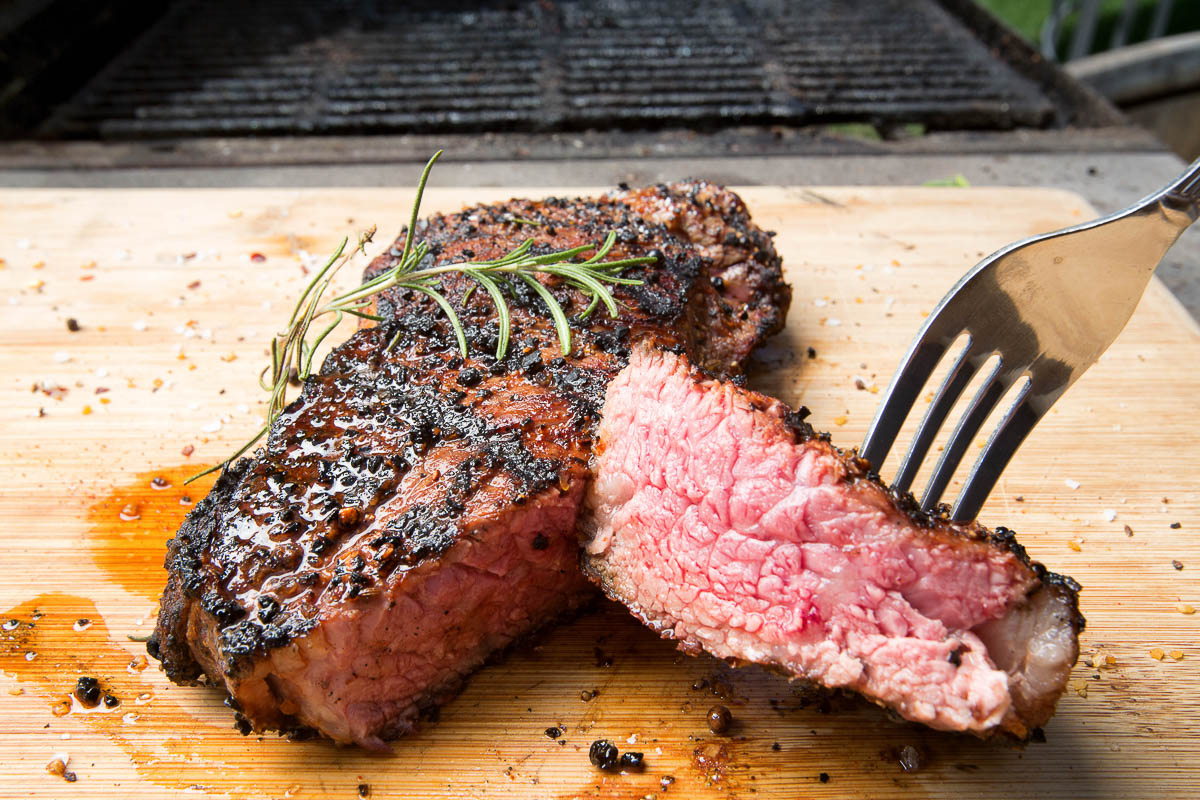
Flavor and Texture
The New York strip is known for its bold rich flavor.
It is marbled, which looks like small white ribbons of fat in the meat. The fat marbling melds with the meat during cooking to give it an intense flavor.
Marbling is one of the main characteristics used to assign quality grades to meat. The more marbling, the higher the quality of steak. This marbling found on the New York strip makes it one of the more expensive cuts of beef.
Since the New York strip is a leaner cut, it is not the most tender steak, but people appreciate its chewy profile and robust flavor.
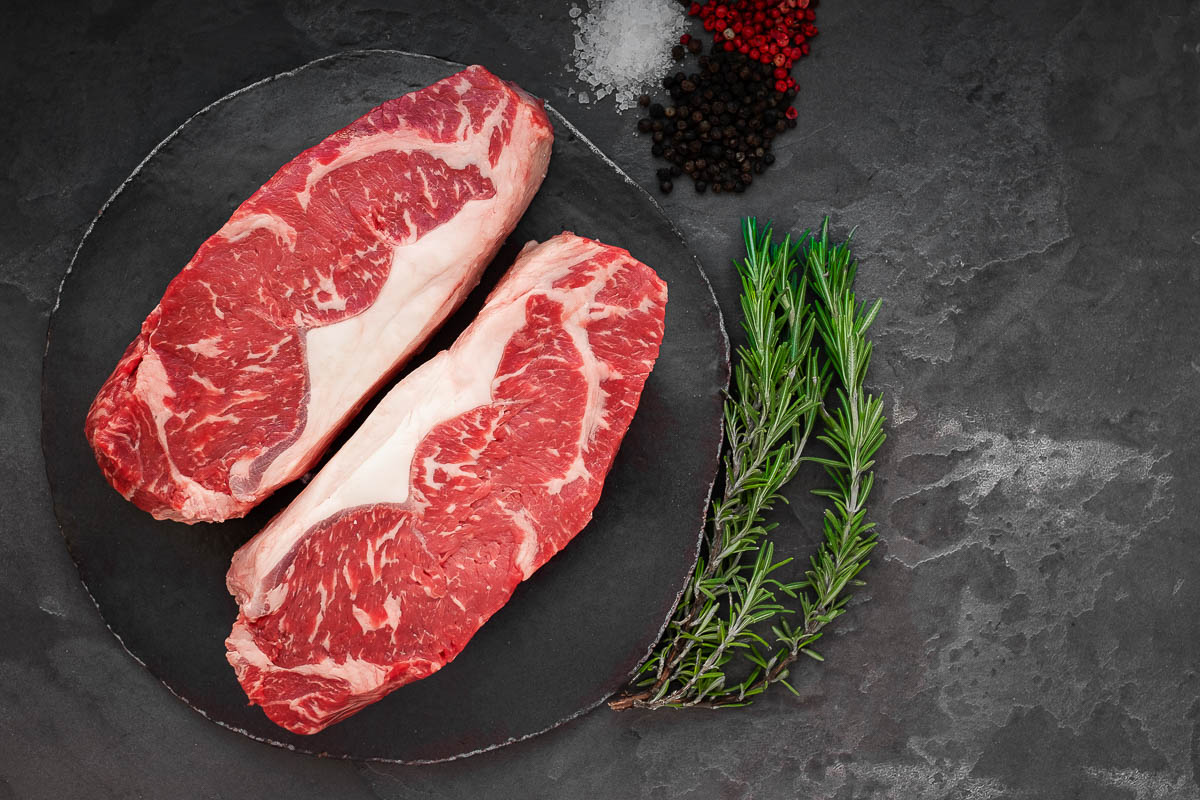
Nutrition
The New York strip is a lean cut of beef that is low in calories. A 3-ounce serving of New York strip steak has 115 calories. Out of these calories, about 65% of them are from protein, and 35% are from fat.
Besides being high in protein, the New York strip contains other nutrients. It is high in selenium, which helps prevent cell damage and has cardiovascular benefits. It is also rich in Vitamin A, zinc, and iron.
In comparison to the ribeye, the New York strip steak has a lower fat content.

Cooking a New York Strip
Grilling is one of the best ways to cook a New York strip. This steak has been called “the ultimate griller’s steak.”
The New York strip should be grilled quickly on a super-hot grill. This gives it a great sear while preventing overcooking. Flip it every 30 seconds and use a meat thermometer to ensure it is done to your liking.
If you don’t have access to a grill or are cooking inside, reverse-sear or pan-roast is recommended. Pan fry your New York strip until it is 5-10 degrees from your target temperature, turning every 30 seconds.
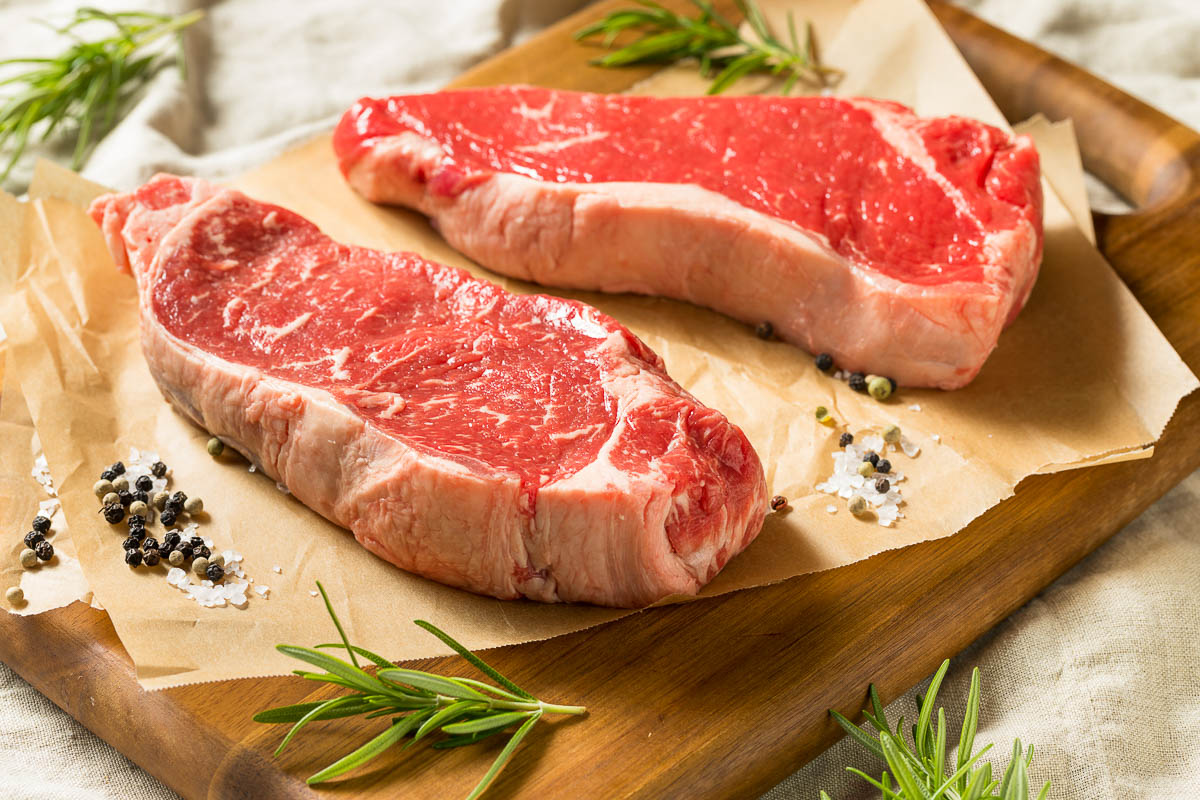
You can sear a New York strip in a skillet before transferring it to a 425 degree Fahrenheit over to complete the cooking process.
Many people enjoy this cut of steak rare. This allows its delicate flavor and texture to shine.
Let your steak come to room temperature for at least 30 minutes before cooking. This helps the steak to cook evenly. Drying the steak with a paper towel will allow the steak to get a good sear quickly.
Since this is a leaner cut of steak, feel free to use butter when cooking a New York strip.
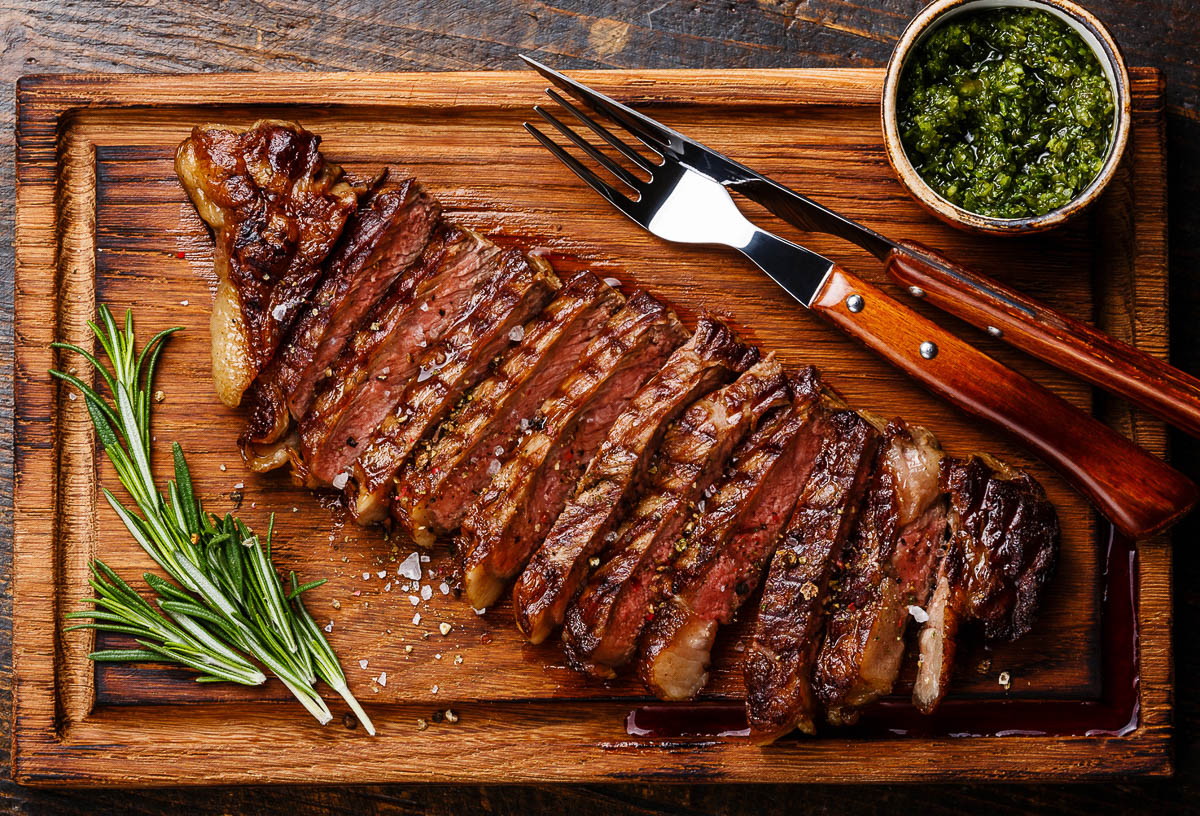
What is a Ribeye?
Ribeye steak is also called beauty steak, Delmonico steak, Spencer steak, scotch fillet, or Market steak. It is one of the most popular steaks.
The ribeye is one of the most expensive cuts of meat. Steak lovers are often willing to pay the extra cost for this moist tender meat.
Ribeyes can be purchased from butcher shops or the meat department of most grocery stores. Ribeyes are also a desirable choice at steakhouses.
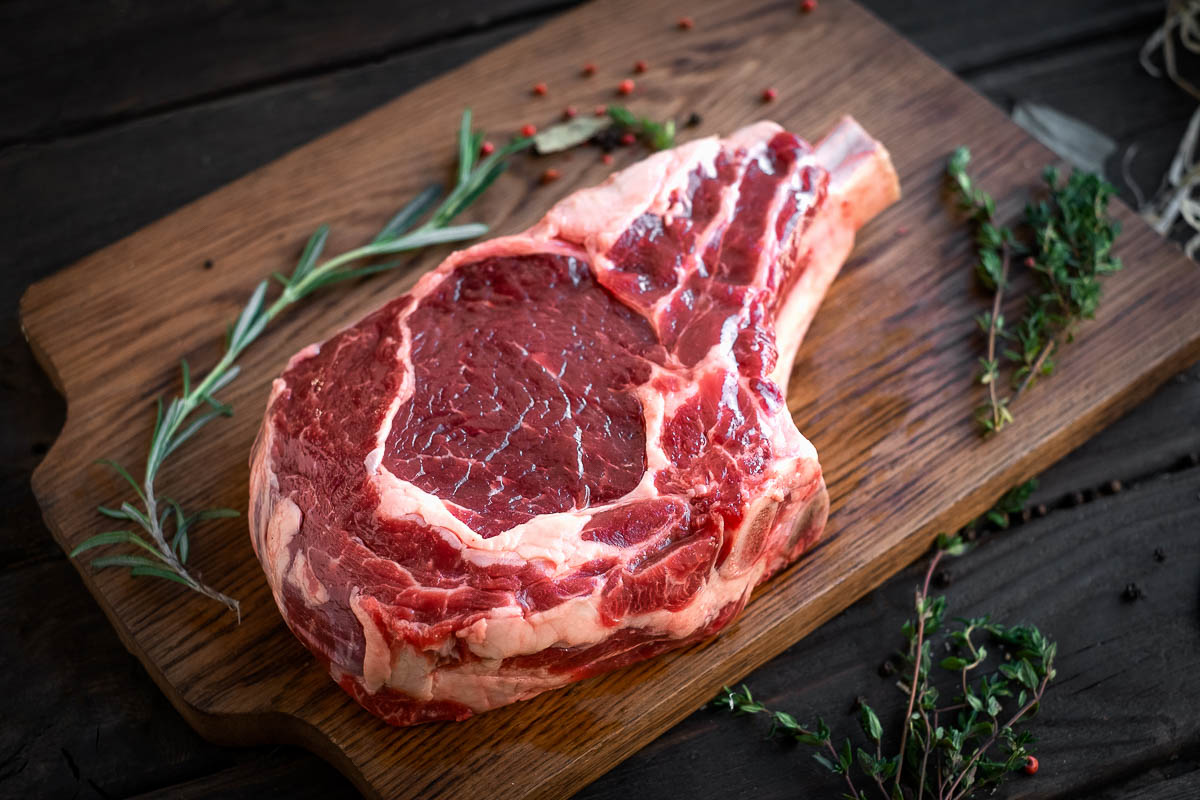
The Cut
Ribeye steaks come from the beef rib primal cut, which is a cow’s upper rib cage. The longissimus dorsi is the main muscle in this cut, which is also the main muscle in a New York strip steak. As with the New York strip, this muscle does not get much exercise, which makes this steak more tender.
These steaks can also be either boneless or bone-in. With the bone in the steak, they may be called rib steak.
Just like the New York strip steak, cooking a bone-in ribeye can be more challenging since the meat farthest from the bone cooks faster than the meat closest to the bone.
The main difference between a ribeye and a New York strip is their fat distribution. While the New York strip has a strip of fat on one side, the ribeye has increased marbling all over the steak.

Flavor and Texture
Similar to the New York strip, the ribeye steak has a significant amount of marbling because of the fat that deposits on this muscle. This gives the steak its juiciness and juicy flavor as the fat melts into the meat.
Ribeye has a melt in your mouth texture. It has a smoother and finer grain texture than strip steak. Because of the large distribution of fat, the ribeye has a richer flavor than the New York strip.

Nutrition
A 3-ounce serving of ribeye steak has 137 calories. These calories are made up of 74% fat and 26% protein. The ribeye has a greater amount of fat than the New York strip steak.
Like the New York strip, the ribeye steak provides other nutritional benefits. This steak is a good source of potassium, phosphorus, and magnesium.
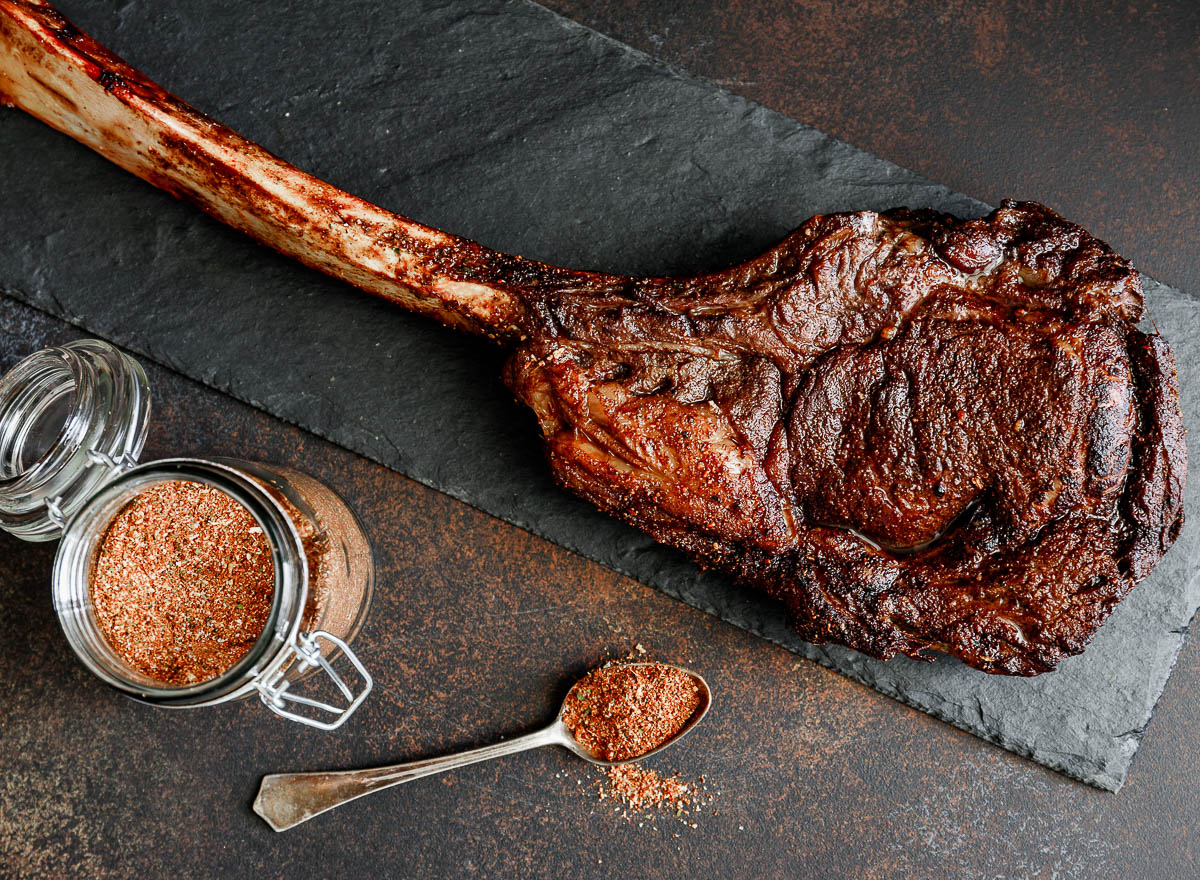
Cooking a Ribeye
Ribeye steaks are best cooked quickly over high heat like the New York strip. This can be done on the grill, in a cast-iron skillet, or under the broiler. This creates a brown crust on the outside and a moist texture on the inside.
It is not recommended to slow roast a ribeye. This would lead the fat to render out of the meat, leading to a piece of beef that is dry and tough. A quick hot sear followed by a slower direct heat method of cooking prevents this.
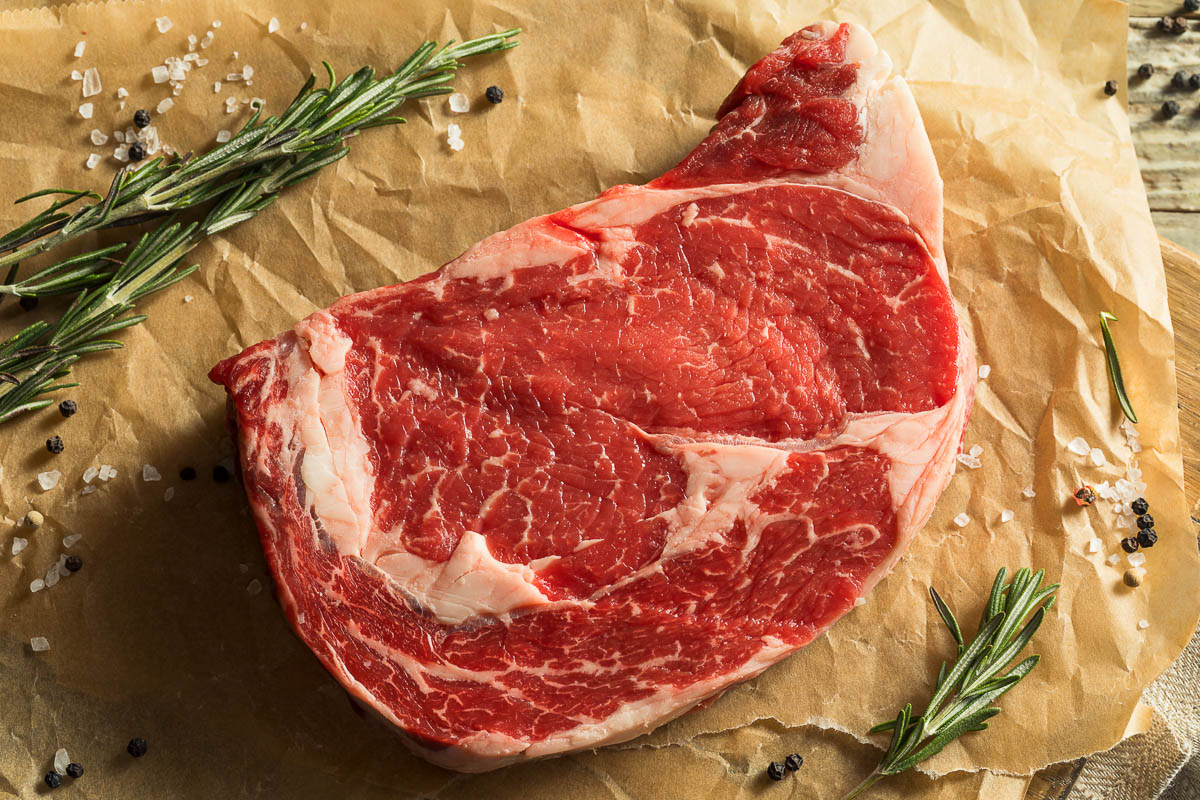
Depending on your preference, you can soak raw ribeyes in a marinade to give it more flavor and tenderize it. Most find the ribeye steak already flavorful enough.
It is best to allow the ribeye to reach room temperature before cooking.
A ribeye that is 1.5 inches thick takes about 3-5 minutes per side to reach medium-rare. Cook until the internal temperature reaches 130-135 degrees Fahrenheit. Use a meat thermometer to keep track of the temperature.
If you prefer steak that is medium or well done, increase the cooking time by 1-2 minutes per side for each degree of doneness. Let your steak rest for 5-10 minutes before serving.
Because of its distribution of fat, the ribeye is more likely than the New York strip to cause flare-ups on the grill when the fat falls onto the coals or burners.
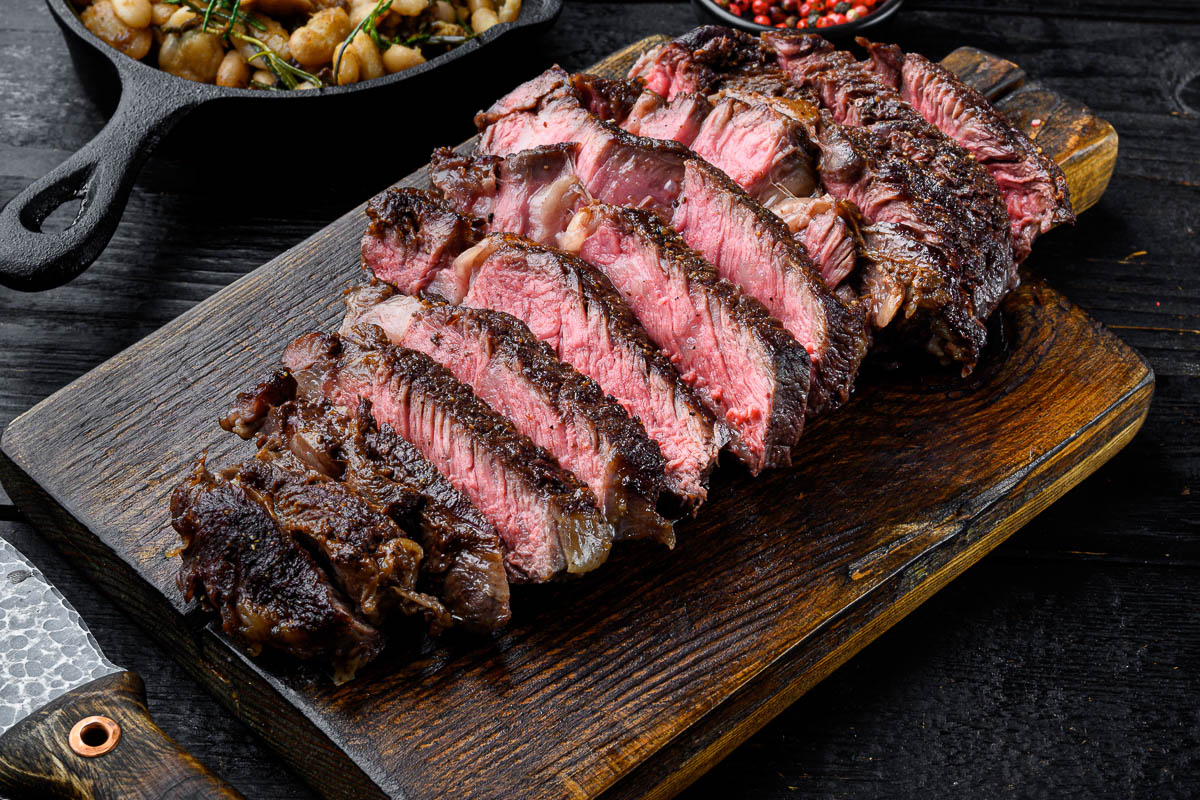
Conclusion
The New York strip and the ribeye are both considered premium steaks. The juicy texture of the ribeye and the bold flavor of the New York strip are both favorites of steak lovers for good reason.
If you have always chosen one of these cuts, I hope this information emboldens you to try something new. Whether you choose the New York strip or the Ribeye steak, you will not be disappointed.


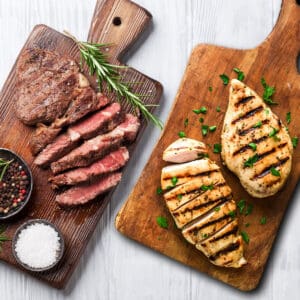
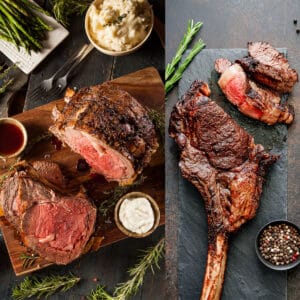


Leave a Reply